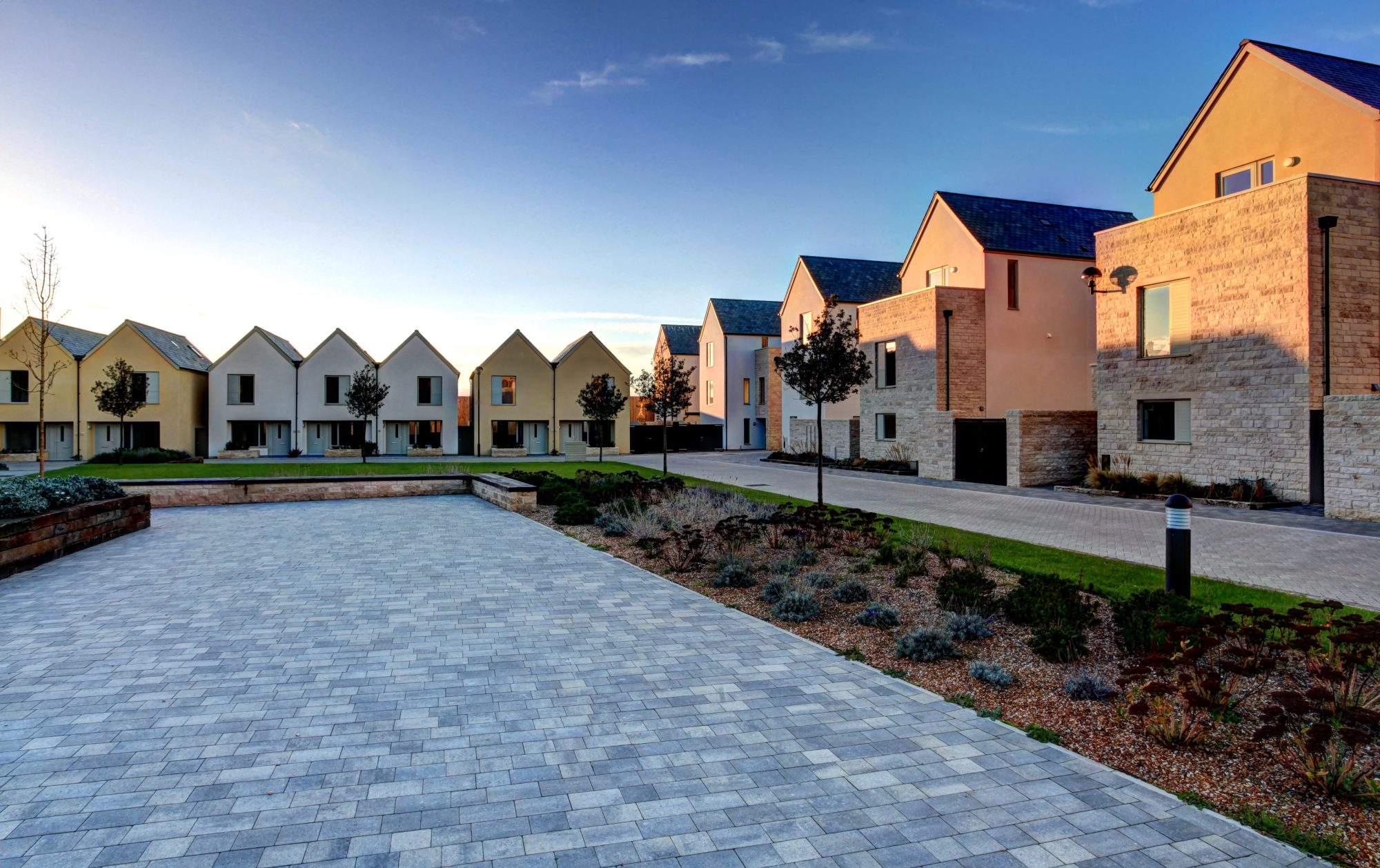Karlo Jacutan, UK Flat Roofing, explores the current state of sustainability in construction and how homes, properties and businesses are becoming more eco-friendly
The idea and execution of sustainability in construction are slowly leaving a meaningful impact on the environment. Construction projects in the UK are consistently implementing sustainable practices within their processes.
Construction agencies and contractors must think of innovative and manageable methods of conducting their construction projects with sustainability in mind, through regenerative materials, environmental policies, and even waste reduction. Because of this, bigger brands have begun adopting ways to increase their sustainability and commitment to minimizing risk for the environment.
Brands such as BT, Apple and Marks & Spencers have incorporated policies that help reduce the destructive impact their services may have on the planet. Whether it may be through charities, products or their buildings, most brands have now chosen to use environmentally-friendly practices.
The current state of sustainability in construction
The construction sector accounts for around 36% of the global energy demand. The scale of the industry’s responsibility for change is massive as the construction sector’s use of energy can significantly affect the environment.
Sustainability is an optimal solution for the construction industry, allowing all types of building projects to minimize energy consumption at outstanding levels.
The UN has produced a sophisticated target plan named the Sustainable Development Goals (SDGs) which encompasses the pressing issues of climate change. The 2030 Agenda for sustainable development provides a detailed blueprint that accounts for peace and prosperity for both the planet and the people, highlighting 17 SDGs that call for action around the world.
Sustainability in schools, buildings and construction projects in different countries is implemented as a part of the Organisation of Economic Co-operation and Development (OECD). These projects utilize an estimated 25% to 40% of total energy, 30% raw materials, 30 to 40% of global greenhouse gas emissions and 30% to 40% solid waste regeneration (according to Supply Chain Sustainability School). This statistic alone has identified the true importance of sustainable construction, highlighting the percentage needed to power environmentally-friendly resources, and highlighting the progress that the construction sector has made throughout the years.
The World Green Building Council (WorldGBC) also believes that green building can contribute to the initiation and execution of the UN’s SDGs, and has provided plans for green offices to deliver the foundations for meeting several, important SDGs. Eden, one of the most environmentally friendly office buildings in the UK, was drafted as an introductory framework for sustainable buildings in the nation, and another example of green buildings currently being built in the UK.
In addition to this, we have also seen regulations in place to ensure that sustainable practices are consistent and effective for construction projects.
Building Research Establishment’s Environmental Assessment Method
Also known as BREEAM, this regulation is an assessment method that uses a rating scheme for various buildings, analysing their design, construction and use with a strong focus on sustainability in the UK. This enables buildings to be recognised for their environmental contributions, improving the sustainable performance of buildings in the UK.
Example of BREEAM Certification
Microgaming Office (UK) was given a BREEAM certification, a rating of “excellent” and a score of 71.3%. This certification was provided due to the company’s dedication to leaving a positive mark on the environment, focusing on achieving a low carbon economy. As a result of BREEAM’s help, Micrograming’s building has now implemented various sustainable practices, such as a proactive knowledge sharing of appropriate recycling schemes, better awareness and collective ownership of eco-activities, and measurement of waste streams, transport, office supplies and more.
How ISO14001 helps businesses develop
The ISO14001 is an international standard that focuses on effective environmental management systems that organizations can follow when they choose to certify to it. The standard allows companies to establish effective environmental performance requirements in their buildings, further assisting them in accomplishing organizational, sustainable goals.
This certification ensures that company environmental objectives are aligned with the strategic direction that the business. This standard demonstrates objectives such as legislation compliances, reduction of waste and responsible purchasing, according to Advisera.
Corporate Social Responsibility aka (CSR)
Corporate Social Responsibility (also known as CSR) refers to the form of self-regulation which mirrors a business’s accountability for the betterment of communities and societies. These often reflect environmental and social measures to improve brand perception, and attractiveness to customers, employees and investors.
Brand examples of CSR
Johnson & Johnson has recently focused on reducing its impact on the planet, with initiatives ranging from utilizing wind power to providing safe water for communities around the world. The company’s goal to seek renewable energy options has made its image extremely attractive and will continue to be perceived as such for years to come.
How homes, properties & businesses are becoming more eco-friendly
We’ve highlighted great examples of sustainable practices being demonstrated across a few brands, but members of the public have also started to see the value and importance of eco-conscious behaviour.
Eco-friendly homes
As everyone is aware, the UK housebuilding industry and market are high in demand, and under its sustainable communities agenda, the Government is now seeking to increase the level of housing across the UK (particularly in the South East).
In addition to the high demand for houses, the environmental case for more sustainable homes in the UK is transparent across the nation. According to GOV UK, our energy demand is consistently rising, and houses account for an estimated 30% of the UK’s total energy use, 27% of carbon dioxide emissions nationwide and an estimated 25% of greenhouse gas emissions in the UK.
With this in mind, implementing sustainability within homes has become crucial. Fortunately, there’s also evidence that millennials (approximately two-thirds of millennials worldwide) are looking to buy “as many eco-friendly products as they can”, and are “willing to pay more for products and services coming from companies that are committed to a positive social responsibility”, according to Open Access Government.
In addition to this, there is also plenty of evidence that suggests eco-friendly homes are becoming more popular throughout the UK. For example, over 30,000 low-carbon, smart homes are planned to be built within the country due to their high demand, with 500 low-energy homes planned for development (according to the founder of Citu).
Using Google Trends, we can also see that various search queries regarding “eco-homes” are also on the verge of breakouts, meaning that search around this topic has grown by more than 5000% in the last 5 years. In short, many are now looking at the benefits of eco-homes, and are looking to buy them within their lifetime. As a result of this, the construction industry will be creating buildings that are capable of demonstrating sustainable features.
Sustainable materials
Traditionally, construction workers use bricks, concrete and other materials that would otherwise harm the environment due to the required resources. However, contractors are now opting to use sustainable materials to better fit the SDGs created by the UN. Resources such as bamboo, straw bales and reclaimed wood are now becoming the major source of building materials due to the long-term benefits of sustainability and quality of life for the building’s occupants.
Sustainable materials in construction refer to materials that have low environmental impact or risks compared to traditional materials. This means that materials that are sustainably sourced such as recycled materials (wood, plastic, or steel), precast concrete and timber which are all available in the UK, are consistently used to better impact the environment.
Sustainable materials also fall under the value of recycled materials and whether the impact of recycling has created a significant difference within the UK. Current statistics (according to GOV UK) have shown us that the UK recycling rate for waste from households was 46.2% in 2019 (from 45% in 2018). These recycled materials trail towards the implementation of eco-friendly features in the construction industry, and the method of recycling made by the council for residents to follow has allowed sustainability to increase throughout the years.
Environmental policies
An environmental policy is any measure that’s provided by a corporation, public or private organization or even by your local government regarding the effects of human activities on the environment. These particular measures are designed to prevent harmful effects from human activities on ecosystems, making them highly important for organizations to implement.
The Environmental Act allows the UK to cover better environmental protection into law, allowing us to set new targets that improve air and water quality, biodiversity and waste reduction.
Take Sainsbury’s environmental policy, for example. Their commitment to helping with the SDGs created by the UN has allowed them to produce zero waste to landfills since 2013, decreased their water usage by 1bn litres since 2006, and 7,992 of CO2e saved through their project “Greenest Grocer”.
As well as this, Primark has also incorporated a policy on sustainable materials for their products. Their environmental policy focuses on specific areas: sourcing sustainable materials, zero use of hazardous substances, increased renewable material, energy efficiency, biodiversity and water efficiency.
Apple has also recently made their environmental policy. They have recently gained criticism in regards to their product’s energy use, however, with journalists claiming that a standard Apple MacBook uses around 70% of its manufacture. To challenge this, Apple has implemented their environmental policy to ensure that its energy demand is balanced, such as the choice to exclude chargers and headphones with new phones.
Waste reduction
According to WRAP, in 2018 there was an estimated food waste resulting at around 9.5 million tonnes, 70% of which was intended to be consumed by people – with 30% of waste being inedible items. With this statistic, the waste percentage can translate to over 36 million tonnes of greenhouse gas emissions annually, and this number does not fully reflect the accurate result, as we also need to take into account food surplus from manufacturing, retail, hospitality and foodservice redistributed through charitable or commercial routes (which mirrors around 740,000 tonnes of food surplus in the UK).
In response to this crisis, the UK has followed the guidance made by the UN with an update on national food waste in January 2020. The UK has reported a reduction of 27% in comparison to the UN’s initial SDG of 50% reduced waste target, which highlights to us that the UK is now over halfway to completing this target nationwide.
This was achieved through a collective effort from various businesses and their dedication to becoming more green, and from councils who have proposed recycling schemes and incentives in reducing food waste. Business waste has highlighted these problems and created solutions that most, if not all businesses and residents are already aware of doing.
Sustainability has been growing steadily across the UK and is evident from the valuable campaigns, policies and targets regarding environmentalism from top brands and companies.
The SDGs set by the UN in recent times has also provided a significant impact as organizations commit to helping reach these targets for a better environment, better planet, and better future.
An article by The Conversation has quoted “If nations make good on their latest promises to reduce emissions by 2030, the planet will warm by at least 2.7C degrees this century, a report by the United Nations Environment Programme (UNEP) has found”, which calls for urgent action by nations across the world today, as it exceeds the internationally agreed temperature rise of 1.5C degrees.
All countries will need to increase their initial ambition to reduce greater reductions in carbon emissions to allow the earth to cool down. However, the steps to reaching the ideal global temperature have been taken by most giant corporations and will require national leaders to take a stand in creating a better planet for all of us.














